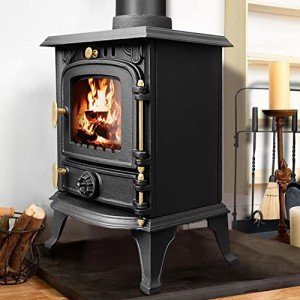The Comprehensive Guide to Log Burner Multi Fuel Stoves
Log burner multi fuel stoves have actually gained substantial popularity in current years for their performance, atmosphere, and ecological advantages. These versatile heating devices can burn several types of fuel, consisting of wood, coal, and other solid fuels, making them a practical option for house owners looking to integrate aesthetic appeal with reliable heating options. This short article explores the different elements of log burner multi fuel stoves, including their operation, benefits, maintenance, and regularly asked concerns.
What is a Log Burner Multi Fuel Stove?
Log burner multi fuel stoves are compact heating appliances designed to burn different solid fuels. Unlike traditional wood-burning stoves, which are restricted to burning wood logs, multi fuel stoves offer the versatility of burning different types of fuels, enabling users to select their favored option based upon schedule, cost, and environmental effect.
How Do Multi Fuel Stoves Operate?
Multi fuel stoves deal with a basic principle: they utilize combustion to produce heat. Multi Fuel Stove Defra Approved enables air flow control, which assists keep ideal combustion conditions. Here's a breakdown of their function:
- Fuel Loading: Solid fuel is loaded into the stove's firebox.
- Air flow Control: The stove has air vents that can be gotten used to control the circulation of oxygen, important for reliable combustion.
- Combustion Process: Once sparked, the fuel burns, producing heat, which radiates out of the stove to warm the surrounding location.
- Flue System: Gases produced throughout combustion are vented outside through a flue, making sure a safe and effective operation.
Types of Fuels for Multi Fuel Stoves
Multi fuel stoves can run on a range of fuels, permitting versatility depending upon availability and heating needs. Here are some of the most typical types:
- Wood Logs: Traditional and environmentally friendly, wood logs are a popular choice however require spices for optimal burning performance.
- Coal: Provides higher heat output and longer burn times compared to wood, making it ideal for extended heating requirements.
- Peat: Common in certain regions, peat can be an alternative fuel source but may produce greater emissions.
- Briquettes: Made from compressed raw material, these can provide a constant burning experience.
Benefits of Log Burner Multi Fuel Stoves
- Flexibility: As the name suggests, multi fuel stoves enable users to burn various kinds of fuel, offering versatility and convenience.
- Effectiveness: Many multi fuel stoves are developed for optimal effectiveness, supplying reliable heating with lowered fuel consumption.
- Affordable: Users can choose the most affordable fuel option offered, possibly lowering heating costs during colder months.
- Ecological Impact: When operated correctly, many multi fuel stoves can minimize greenhouse gas emissions and utilize eco-friendly resources such as wood.
- Aesthetic Appeal: The ambiance produced by a live fire is unmatched, contributing considerably to the interior decor of homes.
| Advantages | Description |
|---|---|
| Flexibility | Capability to burn several fuel types |
| Performance | High heat output with less fuel |
| Economical | More affordable heating alternatives depending upon fuel option |
| Ecological Benefits | Lowered emissions with appropriate stove usage |
| Visual Appeal | Improves home decor and offers comfortable heat |
Maintenance Tips for Multi Fuel Stoves
Regular maintenance is vital to ensure the effectiveness and durability of a multi fuel stove. Here are practical suggestions:
- Cleaning: Regularly clean the ash pan and get rid of any creosote build-up from the flue to ensure efficient operation.
- Evaluation: Have an expert inspect the stove and chimney annually to check for blockages or wear.
- Fuel Quality: Always utilize dry, skilled wood and guarantee coal is of excellent quality to minimize hazardous emissions.
- Ventilation: Ensure that the stove's air vents are not obstructed, as appropriate airflow is necessary for optimum combustion.
- Follow Guidelines: Refer to the maker's guidelines for specific cleaning and upkeep schedules.
Frequently Asked Questions About Log Burner Multi Fuel Stoves
1. Can multi fuel stoves burn wood and coal at the very same time?
No, it is usually not recommended to burn wood and coal all at once as they have different burning characteristics and can lead to inefficient combustion.
2. How often should I clean my multi fuel stove?
The stove should be cleaned routinely, with more thorough cleanings taking place at least each year, ideally before the heating season starts.
3. What is the very best type of wood for burning in these stoves?
Seasoned wood, such as oak, ash, or hickory, is best as it burns more efficiently and produces less creosote compared to softwoods.
4. Are multi fuel stoves safe to use indoors?
Yes, when installed and preserved properly, multi fuel stoves are safe for indoor usage. It is necessary to make sure appropriate ventilation and regular examinations.
5. Can a multi fuel stove heat my whole home?
While a multi fuel stove can offer substantial heat, its ability to warm an entire home depends on its size, the home's insulation, and the stove's output.
Log burner multi fuel stoves offer a useful and versatile heating option for modern homes. With the ability to burn a series of fuels, these stoves not only offer warmth but also enhance the visual appeal of living areas. Appropriate maintenance and understanding of operational standards further guarantee that users can totally enjoy their advantages while lessening environmental impact. Just like any heating service, factor to consider of local policies and best practices will result in a safe and enjoyable experience.

